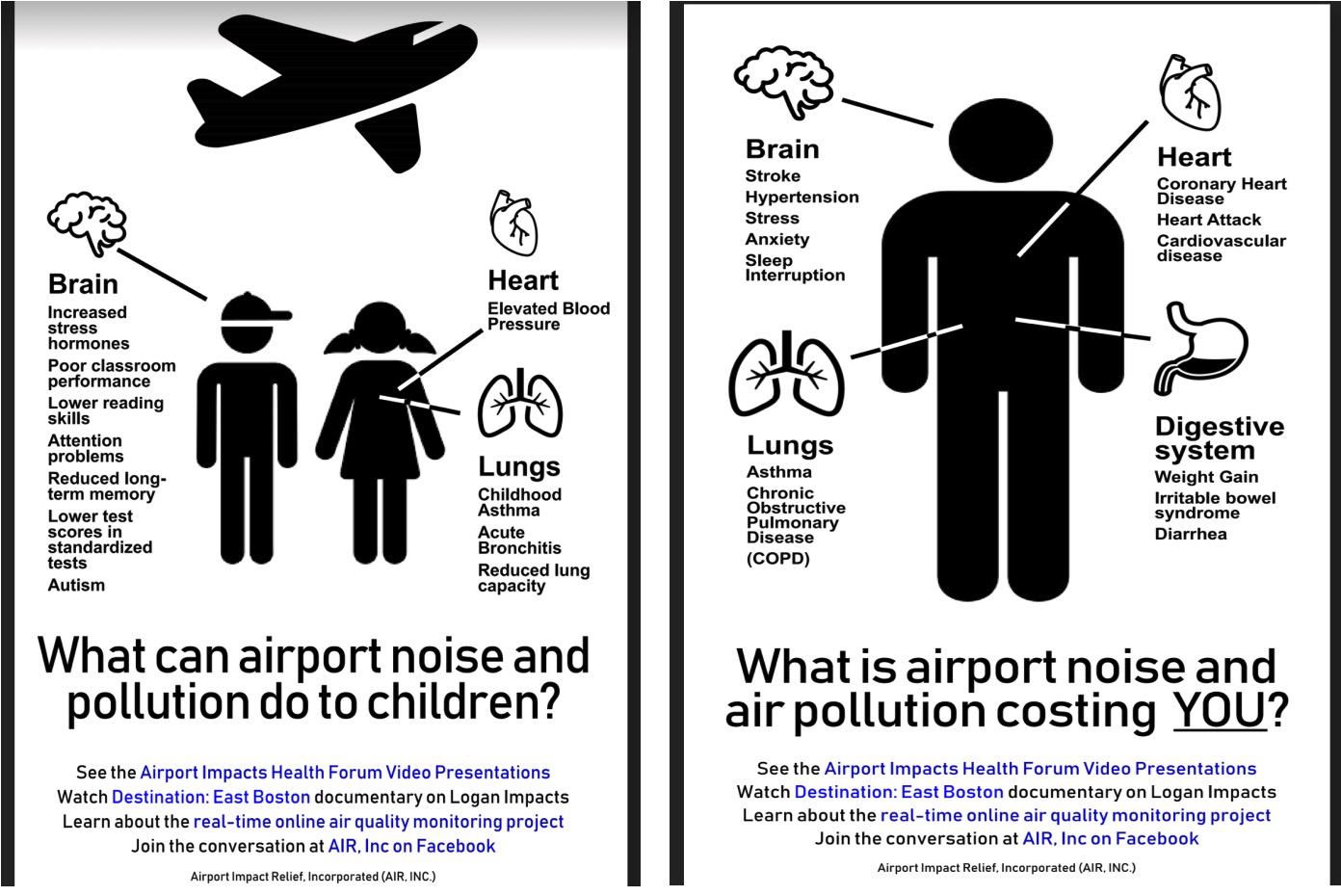Comments
ED 1 - As a child of immigrants from Mexico, I am familiar with what it’s like to be a person of low income. I am very familiar with how programs to help families like mine can sometimes actually hurt them as a result of “unintended consequences.” In this column, I’d like to use my legal skills and cover environmental justice laws applicable to the city and to airports, because this law exists to protect people of low income. I will also cover federal law regarding “incompatible land uses” near airports, and the unintended consequences of ED 1 when people of low income and the unhoused are expected to live in a very polluted area close to LAX.

The purpose of ED 1 is to benefit people of low-income and the unhoused by providing affordable housing. ED 1 projects are streamlined to cut red tape and avoid environmental and many other reviews so that a building permit can be issued within 60 days of application.
Recognizing that some areas are “sensitive,” Mayor Bass has exempted several areas from having any ED 1 projects at all. These exemptions include all areas within the Coastal Zone and Very High Fire Severity Zones, which include about half of Councilwoman Traci Park’s district, and the most affluent areas. There are also exemptions for manufacturing zones and hazardous waste sites, so there is recognition that people living in ED 1 units should not be harmed by doing so. An exemption from ED 1 means that developers wishing to build in the exempted areas will not have access to the streamlined approval process. In these “sensitive” areas, developers will be required to get CEQA approvals, Coastal Commission approvals, and other approvals, as applicable.
There is no airport exemption, and over 1,500 ED 1 units are already in the pipeline for locations in Westchester within the noise contour of LAX, very close to the north runway, nearly directly under flight path of low-flying jets approaching the runway, and in the transitional surface area near the runway. Four of the projects, totaling nearly 1,000 units, are about 1,000 feet from the flight approach to the north runway. This location is also close to the runway, so the jets are coming in about every minute or two, and they are flying low. This is where the jet noise is the loudest and the air pollution is the worst. The heavy traffic on Sepulveda near the airport, where these projects are proposed, contributes to and exacerbates the noise and air pollution.
The City of LA is bound by state law on environmental justice and is committed to ensuring environmental justice, as described here. According to this city website, “[t]he principle of environmental justice ensures equal and equitable protection from environmental and health hazards”.
Councilwoman Park spoke in support of environmental justice laws, and was quoted here during her campaign, as saying: “[E]nvironmental justice issues are finally being centered in the city’s decision-making process. For too long, low-income communities have (literally) been the dumping ground for dirty polluters and unhealthy developments.”
Medical and scientific evidence that areas such as this are unhealthy for human habitation, as shown here. Surely, Councilwoman Park does not want children and other vulnerable people of low income and the unhoused to live in this unhealthy area next to LAX?
The FAA, as a federal agency, is bound by federal environmental justice law, summarized here. Under federal law, “environmental justice” means the just treatment and meaningful involvement of all people, regardless of income, race, color, national origin, Tribal affiliation, or disability, in agency decision-making and other federal activities that affect human health and the environment so that people are fully protected from disproportionate and adverse human health and environmental effects. Under federal law, EJ law ensures equitable access to a healthy, sustainable, and resilient environment in which to live, play, work, learn, grow, worship, and engage in cultural and subsistence practices.
The FAA speaks to the concept of “incompatible uses” near airports, and also regarding the responsibility of the local agency here, which states as follows: “The development of land uses that are not compatible with airports and aircraft noise is a growing concern across the country. In addition to aircraft noise, there are other issues, such as safety and other environmental impacts to land uses around airports which need to be considered when addressing the overall issue of land use compatibility. Although several federal programs include noise standards or guidelines as part of their funding-eligibility and performance criteria, the primary responsibility for integrating airport considerations into the local land use planning process rests with local governments. The objectives of compatible land use planning are to encourage land uses that are generally considered to be incompatible with airports (such as residential, schools, and churches) to locate away from airports and to encourage land uses that are more compatible (such as industrial and commercial uses) to locate around airports.”
If ED 1 projects are built in this area near LAX, federal Executive Order 12898, as described here, would require “airport sponsors to achieve EJ by identifying and addressing disproportionately high and adverse human health and environmental effects, including interrelated social and economic effects, of their programs, policies, and activities on minority populations and low-income populations.” Further, “Order 5610.2, EJ for Minority Populations & Low Income Populations, describes the process for incorporating EJ principles into all existing DOT programs, policies, and activities. Therefore, airport sponsors must take into consideration EJ impacts to surrounding populations regarding airport noise, airport construction, or other adverse human health and environmental effects.”
In summary, the residential development close to an airport is an “incompatible land use”, and it is the responsibility of the city to integrate this into the local land use planning process and to encourage land uses that are more compatible, such as industrial and commercial. The best way to integrate airport considerations into this local land use planning process involving ED 1 projects would be an ED 1 exemption for this area.
What happens if the city doesn’t do that? If the city ignores the incompatible land use and allows thousands of units to be built in this area using the streamlined ED 1 process, will the FAA be excused of its environmental justice obligations to reduce the impact of the airport on the health of people of low income who will live in these projects, which were incompatible land uses all along? I think not. If not, how can the FAA realistically reduce the impact of airport operations on the health of thousands of people who will live in these ED 1 projects, despite the air and noise pollution and safety risks? Reduce the number of jets flying into the airport? Require jets to be EV? Move the airport to LAWA land in Palmdale? Not likely.
So what are LAWA and the FAA to do if the city doesn’t do what it is supposed to do? Wait until people living in these projects start suffering the inevitable effects of the pollution, becoming ill, dying, and filing lawsuits (or their survivors start filing lawsuits), was done here https://www.hbsslaw.com/press/seattle-tacoma-international-airport-sea-tac-pollution/area-residents-sue-port-of-seattle-alaska-air-group-and-delta-air-lines-for-toxic-pollution, when it was unsafe to live there all along? The FAA carries the big stick of “eminent domain” for situations like these, and it could be that taking the projects by eminent domain and ripping them down after people are exposed to unsafe levels of pollution may be the only way to comply with federal environmental justice laws. There is precedent for that right here in Westchester. Over 4,000 homes within the same noise contour of LAX were taken by eminent domain and destroyed because residents of those homes would be exposed to excessive noise levels that were harmful to their health, as reported here and here.

The negative health effects from pollution are well established, as discussed above. So why would the city allow housing for people of low income and the unhoused to live in this polluted area so close to LAX when the city is well aware that living there will harm them? Sure, the land is cheap in this area because of its location and unsafe levels of noise and air pollution. Developers will surely make a bundle by building housing there. But ED 1 is not and should not be about providing streamlined permitting processes and nice profits for developers who want to build there because the land is cheap. It should be about the health and safety of human beings who will live there. Why has Councilwoman Park taken no position on this?
There have been many low-income housing project blunders in the history of our state and country that were so big that the housing projects had to be torn down because they were not safe for the people who lived there. Wholesale exemptions of fire and coastal zones in CD 11 from any ED 1 projects at all (communities with the most affluence and the freshest air) while allowing an ED 1 streamlined process to house people of low income and the unhoused in projects in an area with deafening jet noise, high levels of air pollution, and many negative health effects, promises to rank among the biggest of housing blunders.
Councilwoman Park, why the holdup in getting involved and taking a position to protect the very people ED 1 housing and shelters are supposed to help? Streamlined approvals are not appropriate here, and not consistent with protecting the health of the people ED 1 is supposed to help. If unconditional exemptions can be granted for fire and coastal zones of your district, where your most affluent constituents reside in quiet communities with fresh air, surely one can be granted within the noise contours and polluted area around LAX in order to protect the people ED 1 is supposed to help.
Protecting people of low income and the unhoused from living in a “dumping ground” of “unhealthy developments” that you mention in your quote above, Councilwoman Park, is the right thing to do morally and ethically, and as a matter of equity and environmental justice.
(Rosa Padilla is a retired trial attorney and lifelong Los Angeles resident who has been a vocal advocate for her Westchester community, challenging city upzoning plans that threaten local neighborhoods with overdevelopment and environmental risks.)






